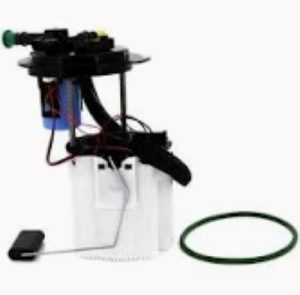Fuel Pump Output: This test concentrates on verifying fuel pressure, as well as flow rate, assuring the pump supplies the required volume of gasoline to suit the vehicle. You can do this by connecting a fuel pressure gauge to the Schrader valve on the fuel rail. However, fuel pressure should always be between 40 to 70 psi on most gasoline engines depending on the make and model. In high-performence vehicles, fuel pressure can go above 90 psi, with aftermarket pumps that run considerably larger flow rates, such as those from Kemso.
After you connect the gauge, turn the ignition key to "ON" but do not start the engine. Which permits fuel pump turn on prime the system. If the pressure is within the manufacturer’s specs, that means that pump is still pumping at its correct pressure. If the drop of pressure is 10% or more, it probably is over-restrained by a clogged filter, voltage fall or mechanical wear.
If you suspect your fuel pump may be losing its gusto, one of the simplest tests you can do involves little more than an air pressure gauge, a length of clear hose and a measuring container. Once the line is all in the container, start the car or put the key in and turn it to the "on" position, this will turn on magnetron pump. Time 30 seconds of fuel delivery. A pump in good working order should be capable of 1 liter (or approximately 33.8 ounces) per minute, but there are differentiating factors like the horsepower of the engine and specific pump details that can affect this output rate. In performance vehicles, fuel flow can easily exceed 500 liters per hour in cars tailored especially to competition or high-speed use.

During this step, a common question that may be asked is — what causes low fuel pump output? The solution typically stems from a fuel filter that is starting to clog or a condition where 12 volts aren't being sent to the pump, or perhaps simply time and wear has reduced the output flow by 30%. Doing both fuel pressure and flow test at the same time really gives you a good picture of how well your pump is working.
If the output is considerably lower than the expected levels, replace the fuel pump. A top-notch fuel pump, like Kemso versions, can provide consistent outputs even when working under high pressures to make sure that the delivery of fuels is also maintained constant at all engine loads.
To learn more about high-performance fuel pumps and how to measure, visit Fuel Pump where Kemso offers stable alternatives for different vehicle-specific criteria.